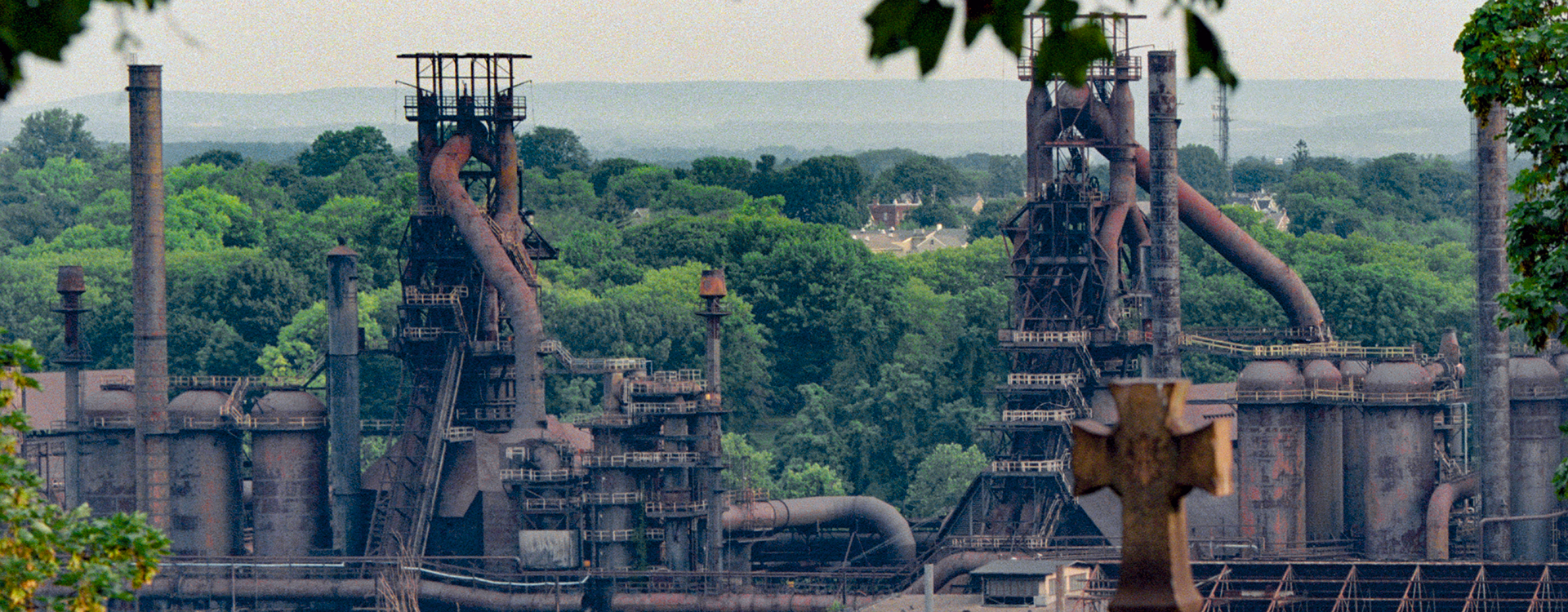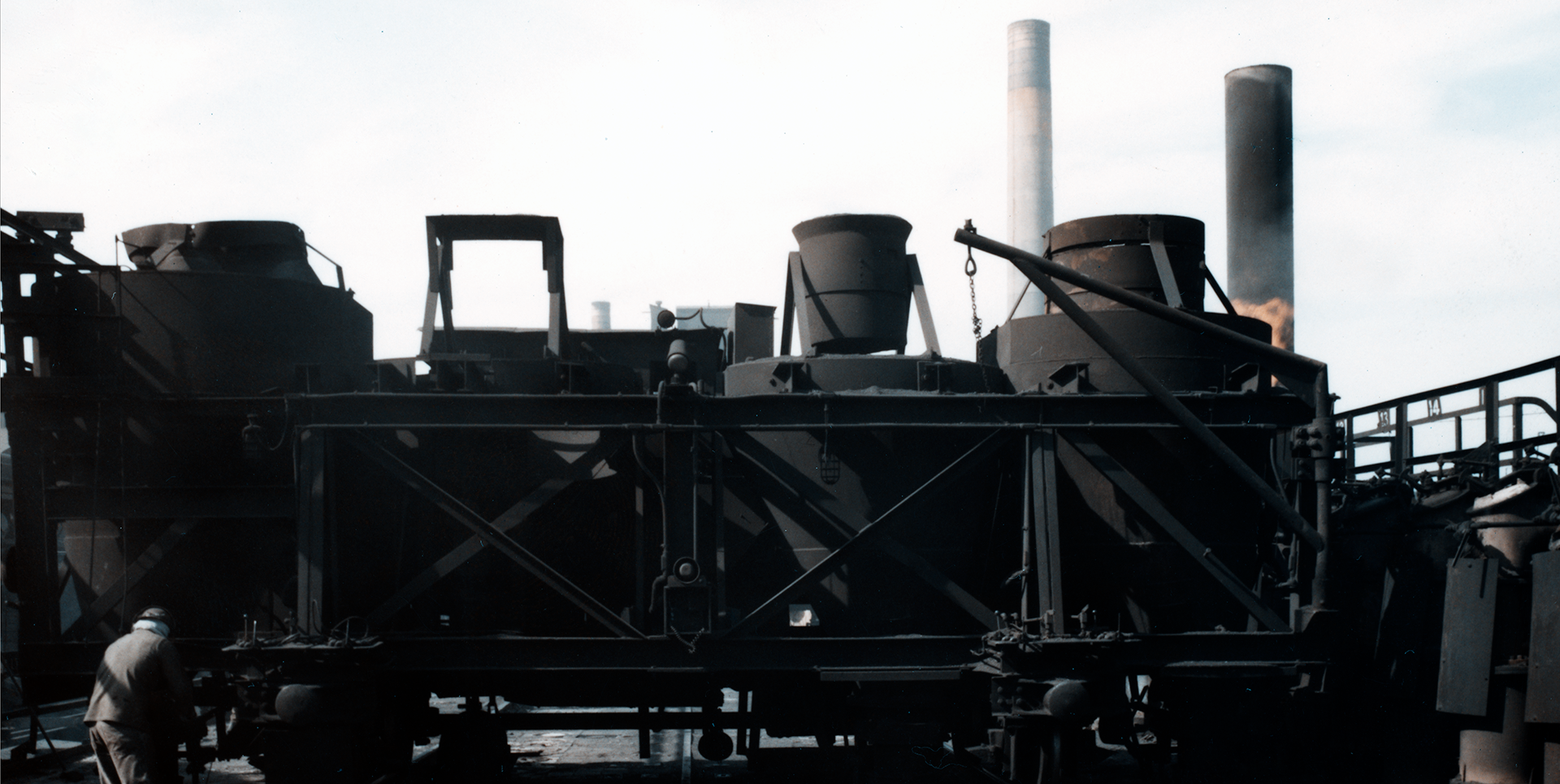INDUSTRIAL CULTURE
JUNE 7TH, 2016
MANUFACTURING, RUST BELT & BEYOND

Bethlehem Steel was the epicenter of the American industrialized fortitude and the epoch of industrial prowess in America’s folklore. Unbeknownst to many Americans in modern times, it’s workforce appeared resilient to globalization needs. Bethlehem was the pride that no one saw ending, in a post-Carnegie era. In its heydays, large industrial complexes served as the great polluters as well as employers of their times and the thread that kept America together. If only the great steel industrialist Charles Schwab knew of the legacy that his corporation left behind on the banks of the Lehigh River. These great steel castles nestled in the picturesque landscape of Pennsylvanian communities have given America; strength in the workforce, modern skyscrapers, bridges, and warships. These objects, therefore, contain authority in a historical context when viewed in a correct light. It becomes problematic as a documentary image-maker, when examining these remnants and all the intricacies making up its framework, and becoming captivated from the allure of industrialized cultures decline.
American Industrial heritage can be explained as structures once mega facilities that housed workforces that drove both manufacturing and production of technological advancements of their time. A mere simplistic examination, however, it is more than the sum of its parts; this transcends a way of life that holds significance in the way we understand manufacturing practices and their technological advancements. An industrial-centric culture exemplified by the enigmatic structures that truly represent humankind’s accomplishments. These monolithic structures are the very essence of the human condition that has etched itself onto them as well as the surrounding landscape. Folklore memoirs, when at shift change at Bethlehem steel, the entire town of south Bethlehem would muster as a flurry of busy bees. The street intersections choreographed by police preformed as a ballet of laborers coming on and off shirt work. An act that would make modern day Wall Street traffic tabloids blush regarding the mass exodus and oncoming slew of labors. Even local transit shelters fabricated as larger than life, had massive crowds of employees waiting for their transit vehicles. This was a daily event, just to imagine bells and whistles, all over town, in a commotion of madness, in the midst of it all; this would have been a sight to view.
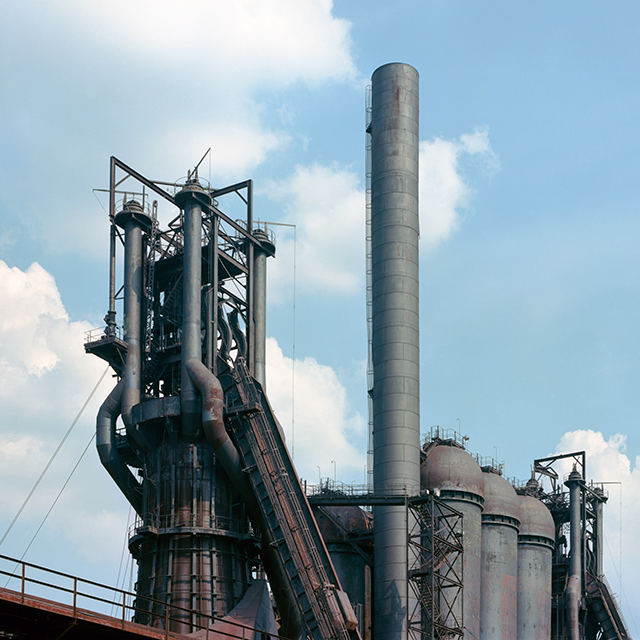
HISTORIC CARRIE FURNACES - SWISSVALE, PA
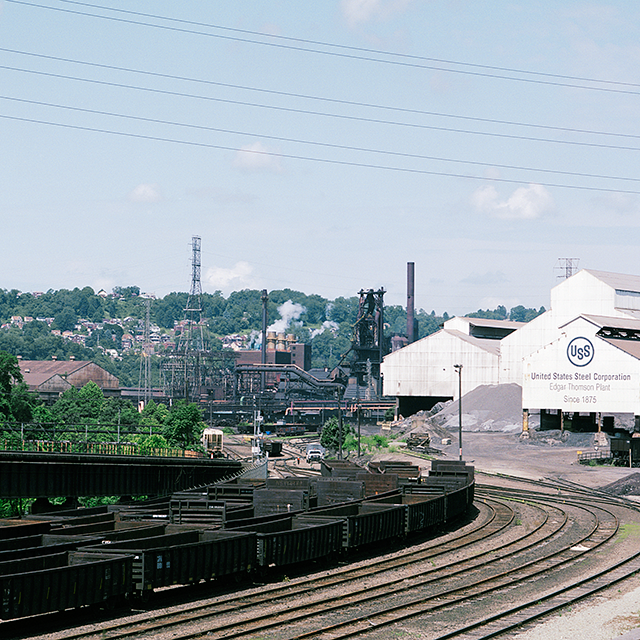
EDGAR THOMSON STEEL WORKS - BRADDOCK, PA
Some of the earliest generations of migrants settled in communities, which would entrench them and their own future generations to come in the automation of the workforce, for the prosperity of their families’ future. This began the shift from rural American Sharecropper villages to industrialized homesteads. Individuals and families still owed rent, although now they were dependent on the company store. A revolutionary and radical shift in the populous labor dynamic, of those times, now congealed within our cosmopolitan couture, however, now concentrated in new technologies. Industrial proficiency from coal, steel, and power generation (and other manufacturing-reliant sectors) was the epoch of the 19th and 20th century, which consumers commenced a dependency on manufactured goods on a large scale. In contemporary times, for example, the metropolitan cities we populate, society has detached itself from notions of hardship, and laboring practices. Images of Industrialism are signifiers of humanity’s triumphant times in manufacturing and laborious workforces.
Billy Joel lent his voice to the plight of hardship and the illusion of what once was; his anthem Allentown serves as a reminder of the life and times of industry lost. This permeated into popular culture, Billy Joel, substituted Allentown for Bethlehem as it resonated better lyrically as an artistic choice. As an afterthought, a fascinating theory, that Billy Joel could have written Piano Man as a muse in linkage to high times of the epoch era of industrialized culture. This was the essence of a master knowing how to triage on the pulse of a tragedy of Americana. One notable film such as the 1968 “The Deer Hunter” pays reverence to the colloquial Pennsylvanian steel town, in its height and the subsequential downturn of the steel sector.
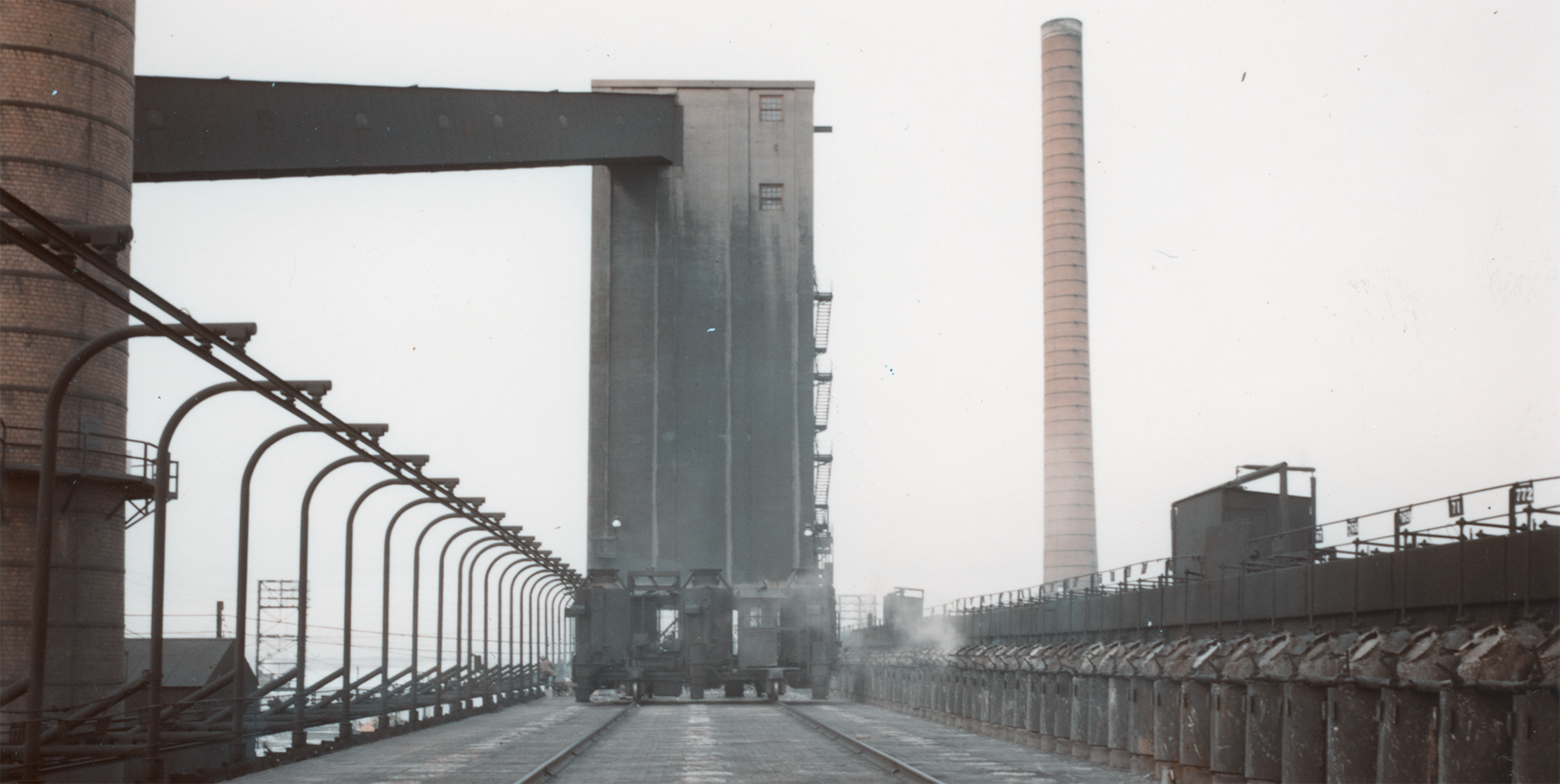
TOP OF COKE OVENS CIRCA 1980- BETHLEHEM STEEL, LACKAWANNA PLANT - BUFFALO, NY
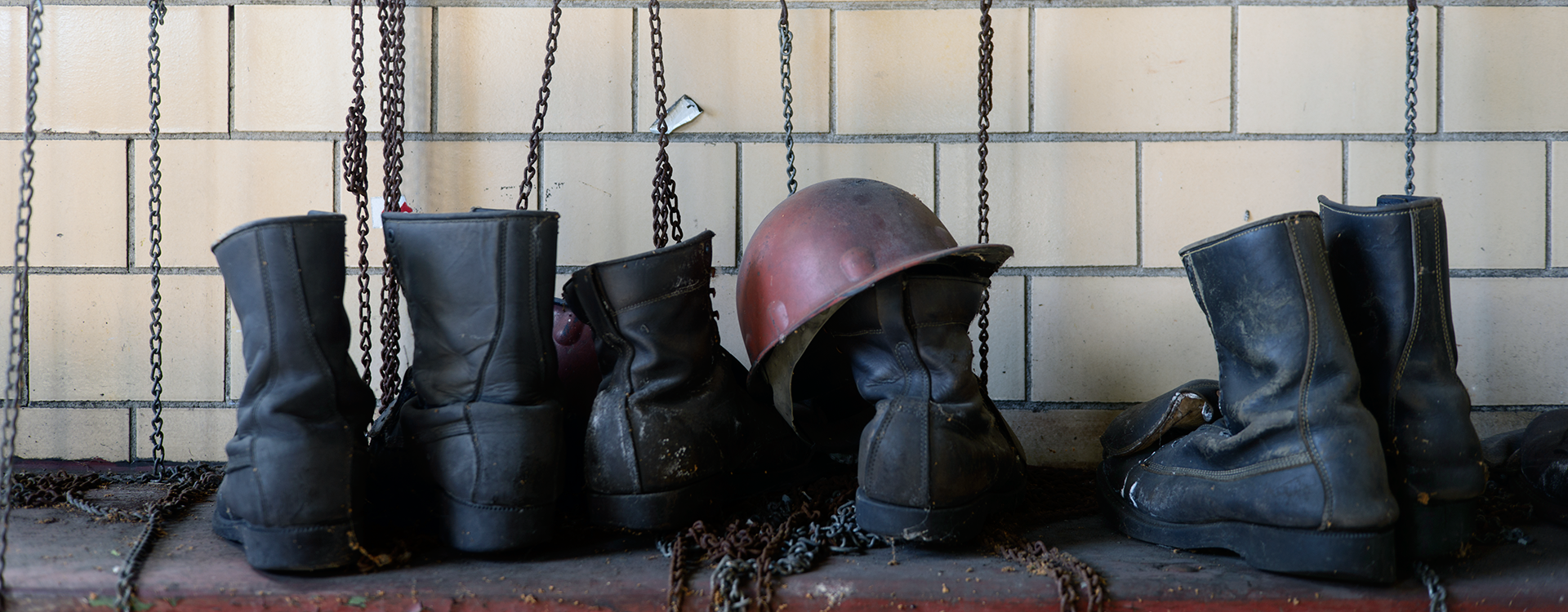
WELFARE ROOM - BETHLEHEM STEEL, LACKAWANNA PLANT - BUFFALO, NY
Money and power became instigators of corruption. At the tail end, there was a great fear of uncertainty all due to company executives squandering to lavish needs, unions promising the world to the masses of employees and in summation, bankruptcies and closures prevailed. Laborers once faithful to the company left with nothing except layoff notices and bills to pay. The remaining workers left to decommission what was left of the facilities. Once generations that depended on them for work and a symbol of prosperity changed into towns of disarray, rampant crime, and broken spirits. The identities of the towns were lost. Until recently, where corporations and groups interested in the heritage and preservation came into play. Nowadays, these iconic locations have transformed into touristy locals with hipster hangouts and cultural events fit for family-friendly gatherings. This is one avenue to preserve the historical culture and in turn, generate income for the upkeep and maintenance for future generations to gather and witness history.
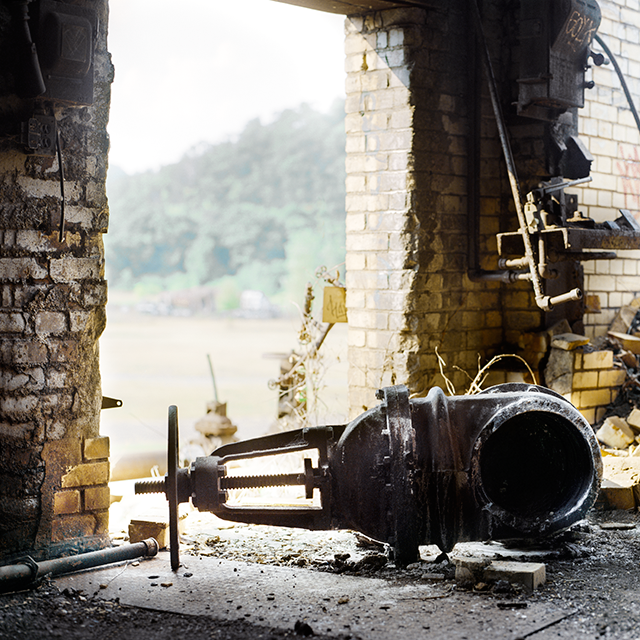
REMNANTS ON THE FURNACE DECK - CARRIE FURNACES
LUMIÈRE OF INDUSTRIAL CULTURE
INFLUENTIAL PHOTOGRAPHERS
Lumière is French for light; a key component in the creation of images and a conjecture of gaining knowledge. In the progress of evolution, science drives new technological practices, in turn, this fuels manufacturing sectors and the human drive to produce more effectively. In the photographic realm, three individuals I have been influenced by. Their life's work has surpassed them beyond the grave. Not listed are the Beckers (Bernd and Hilla Becher) and their typologies, of industrial buildings and structures. Dorothea Lange a Farm Security Administration (FSA) photographer, created human narratives from roadsides containing the human plight. Both retrospectively are honorable mentions in this Lumière of industrial culture and key figures in influencing my practice and ideas regarding industry and humanity.
Lewis Hine, an American photographer that fashioned social reform with the use of his camera as a tool. His iconic images of children working in deplorable conditions, from coal mines to textile mills; was instrumental in changing child labor laws. This was not only America’s dirty little secret as well as any nation that enlisted minors in industrialized labor at the time. Hine, a discerning narrator knew how to capture images, using his skills he managed to gain access to the children and facilities on obtaining images that would shed light on his crusade. Hine’s work is greatly influential to anyone that seeks insight into the human condition, labor movements and practices, and finally the industrialized movement.
Walker Evans is one of the twentieth century’s most influential artists. His razor sharp ideas forged from his 8x10 camera that articulated visual communication for generations to come. His subject matter from his images in the novel “Let Us Now Praise Famous Men” (with writer James Agee) to his unparalleled fieldwork at the Farm Security Administration (FSA) captured the vernacular consequences of the depression era. As Evans stated his goal was to produce images that were transcendent and authoritative, posthumously it is an understatement. Evans was the photographic rebel that traversed North America with a mandate to capture humanity even when there was no soul within the vicinity. He found and created images that magnified humanity’s presence in his time and went on to inspire countless other artists, from Robert Frank, Diane Arbus, Lee Friedlander, and the Beckers.
Margaret Bourke-White a prominent photographer in her own right was the first female permitted to take photographs of the Soviet industry and an American war photographer. This female photographer was the first in many, however; Her legacy solidified by her work ethic with bold imagery notably were her images of the construction of Fort Peck Dam, featured in the first issue of Life Magazine; November 23, 1936. White, was a photojournalist and staff photographer for Life Magazine in the mid-1900’s. Margaret was influential as breaking not only the female barrier but also breaking in as a pioneer in many avenues, this made her a force to be reckoned, besides her many firsts and prestigious accomplishments and accolades, in the end, it was always her images, this pierced the public’s interests and set her as a celebrated image creator.
